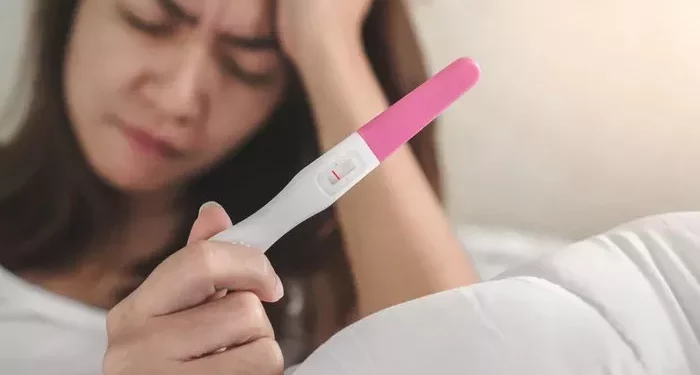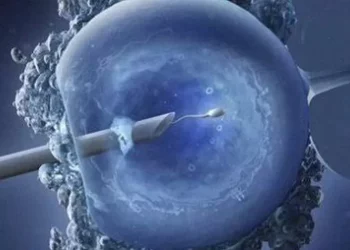The fallopian tubes are a pair of slender tubes that connect the ovaries to the uterus. They play a critical role in reproduction by providing the pathway for the egg to travel from the ovary to the uterus, and it is within these tubes that fertilization typically occurs. When the fallopian tubes are blocked, the egg and sperm cannot meet, making conception difficult or impossible. Blocked fallopian tubes, also known as tubal factor infertility, are a common cause of infertility in women, accounting for approximately 25-30% of infertility cases.
Causes of Blocked Fallopian Tubes
Pelvic Inflammatory Disease (PID)
Pelvic inflammatory disease (PID) is an infection of the female reproductive organs, often caused by sexually transmitted infections (STIs) such as chlamydia and gonorrhea. When these infections are not treated promptly, they can spread to the fallopian tubes and cause inflammation. The body’s response to the infection often leads to the formation of scar tissue and adhesions within the tubes, which can block the passage of the egg and sperm. Even a mild infection can cause significant damage, leading to infertility.
Endometriosis
Endometriosis is a condition where tissue similar to the lining of the uterus, known as the endometrium, grows outside the uterus. These endometrial growths can occur on the ovaries, fallopian tubes, and other areas within the pelvis. When endometrial tissue grows on or near the fallopian tubes, it can cause inflammation, swelling, and scarring. This can lead to blockages within the tubes, preventing the egg from traveling to the uterus. Endometriosis can also cause the tubes to become distorted or stuck to other pelvic structures, further complicating the pathway for the egg and sperm.
Previous Surgeries
Surgeries in the abdominal or pelvic region, particularly those involving the reproductive organs, can lead to the formation of scar tissue (adhesions). Procedures such as appendectomy, cesarean section, or surgeries to remove ovarian cysts or fibroids can all result in adhesions that may block the fallopian tubes. Scar tissue can form as a normal part of the healing process after surgery, but in some cases, it can interfere with the function of the fallopian tubes, leading to infertility.
Ectopic Pregnancy
An ectopic pregnancy occurs when a fertilized egg implants and begins to grow outside the uterus, most commonly in one of the fallopian tubes. This condition is a medical emergency that requires prompt treatment to prevent serious complications. An ectopic pregnancy can cause significant damage to the fallopian tube, leading to scarring and blockages. Women who have experienced an ectopic pregnancy are at an increased risk of tubal factor infertility due to the potential damage to the tubes.
Fibroids
Fibroids are benign (non-cancerous) growths that develop in the muscular wall of the uterus. While fibroids themselves are not typically associated with cancer, they can cause a variety of reproductive issues, including infertility. Fibroids that grow near the fallopian tubes can compress or distort the tubes, leading to blockages. This physical obstruction can prevent the egg and sperm from meeting, thereby causing infertility.
Symptoms of Blocked Fallopian Tubes
Blocked fallopian tubes often do not cause any noticeable symptoms. Many women with tubal blockages are unaware of the problem until they experience difficulties conceiving. However, some women may experience symptoms that could indicate an issue with their fallopian tubes. These symptoms can include:
1. Pelvic pain, which may be chronic or cyclical, often related to the menstrual cycle.
2. Irregular or painful periods, which could be a sign of underlying conditions like endometriosis or PID.
3. Unusual vaginal discharge, which may occur with infections like PID.
4. Pain during intercourse.
While these symptoms are not specific to blocked fallopian tubes, they can indicate a reproductive health issue that warrants further investigation. Women experiencing infertility or any of these symptoms should consult a healthcare professional for a thorough evaluation.
Diagnosing Blocked Fallopian Tubes
Diagnosing blocked fallopian tubes typically involves a series of tests and procedures designed to assess the patency and function of the tubes. The most common diagnostic tests include:
Hysterosalpingography (HSG)
Hysterosalpingography (HSG) is an X-ray procedure used to evaluate the shape and patency of the fallopian tubes and the uterine cavity. During the test, a radiopaque dye is injected into the uterus through the cervix. X-ray images are then taken to track the flow of the dye through the uterus and fallopian tubes. If the dye flows freely through the tubes and spills into the abdominal cavity, the tubes are considered open. However, if the dye does not pass through the tubes, it indicates a blockage. HSG is a relatively quick and minimally invasive procedure that can provide valuable information about tubal health.
Laparoscopy
Laparoscopy is a surgical procedure that allows direct visualization of the pelvic organs, including the fallopian tubes. During the procedure, a small incision is made near the navel, and a laparoscope (a thin, lighted tube with a camera) is inserted to examine the reproductive organs. Laparoscopy can identify blockages, adhesions, endometriosis, and other conditions affecting the fallopian tubes. In some cases, minor surgical procedures can be performed during the laparoscopy to treat the identified issues. While laparoscopy is more invasive than HSG, it provides a comprehensive assessment and can be both diagnostic and therapeutic.
Sonohysterography
Sonohysterography, also known as saline infusion sonography, is an ultrasound-based procedure used to evaluate the uterine cavity and fallopian tubes. During the test, saline solution is injected into the uterus through the cervix, and ultrasound images are taken to visualize the flow of saline through the tubes. This test can help identify blockages and other abnormalities within the tubes. Sonohysterography is less invasive than laparoscopy and does not involve radiation, making it a useful diagnostic tool.
See also: When Is the Right Time to Conceive After the Period?
Magnetic Resonance Imaging (MRI)
Magnetic resonance imaging (MRI) is a non-invasive imaging technique that can provide detailed images of the reproductive organs. While not routinely used as a first-line diagnostic tool for tubal blockages, MRI can be helpful in complex cases where other tests are inconclusive. MRI can identify structural abnormalities, adhesions, and other conditions affecting the fallopian tubes.
Treatment Options for Blocked Fallopian Tubes
The treatment for blocked fallopian tubes depends on the location and severity of the blockage, as well as the underlying cause. Treatment options range from surgical interventions to assisted reproductive technologies like in vitro fertilization (IVF).
Surgery
Surgical procedures can be used to remove blockages, repair damaged tubes, or remove adhesions causing the blockage. The choice of surgical procedure depends on the specific condition and location of the blockage.
Laparoscopy
Laparoscopy is a minimally invasive surgical procedure that can be used to treat blockages in the fallopian tubes. During the procedure, a laparoscope is inserted through a small incision, and specialized instruments are used to remove blockages or adhesions. Laparoscopy is often used to treat mild to moderate blockages and can also address conditions like endometriosis or pelvic adhesions that contribute to infertility.
Laparotomy
Laparotomy is a more invasive surgical procedure that involves a larger incision in the abdomen. It is typically used for more complex cases where laparoscopy may not be feasible. During a laparotomy, the surgeon can directly access the fallopian tubes to remove blockages, repair damage, or address other issues. While laparotomy involves a longer recovery time compared to laparoscopy, it can be effective in treating severe blockages.
Tubal Reanastomosis
Tubal reanastomosis is a surgical procedure used to reconnect the fallopian tubes after a previous sterilization procedure (tubal ligation). This procedure can also be used to repair tubes damaged by infection or surgery. During the procedure, the blocked or damaged segment of the tube is removed, and the healthy ends are reconnected. Tubal reanastomosis is a complex procedure that requires a skilled surgeon, but it can restore natural fertility in some cases.
In Vitro Fertilization (IVF)
In vitro fertilization (IVF) is a fertility treatment that bypasses the fallopian tubes entirely. During IVF, eggs are retrieved from the ovaries and fertilized with sperm in a laboratory. The resulting embryos are then transferred directly into the uterus, where they can implant and develop. IVF is often recommended for women with blocked fallopian tubes, particularly when surgery is not a viable option or has not been successful. IVF offers a high success rate and is a well-established treatment for tubal factor infertility.
See also: After How Many Days of Your Period Do You Ovulate?
Other Assisted Reproductive Technologies (ART)
In addition to IVF, other assisted reproductive technologies (ART) can be used to help women with blocked fallopian tubes achieve pregnancy. These include:
Intracytoplasmic sperm injection (ICSI): A specialized form of IVF where a single sperm is injected directly into an egg to facilitate fertilization.
Egg donation: Using eggs from a donor can be an option for women with significant tubal damage or other fertility issues.
Gestational surrogacy: In cases where the uterus or tubes are severely damaged, using a gestational surrogate to carry the pregnancy can be an option.
Conclusion
Blocked fallopian tubes are a common cause of infertility in women, with a variety of underlying causes such as pelvic inflammatory disease, endometriosis, previous surgeries, ectopic pregnancy, and fibroids. While blocked tubes often do not cause noticeable symptoms, they can significantly impact a woman’s ability to conceive. Diagnostic tests like hysterosalpingography, laparoscopy, sonohysterography, and MRI can help identify tubal blockages and guide treatment planning.
Treatment options for blocked fallopian tubes include surgical procedures to remove blockages and repair the tubes, as well as assisted reproductive technologies like in vitro fertilization (IVF) that bypass the tubes altogether. Each treatment option has its advantages and considerations, and the best approach depends on the individual patient’s circumstances.
Consulting a healthcare professional is essential for women experiencing infertility or symptoms that may indicate blocked fallopian tubes. A thorough evaluation and appropriate treatment plan can help address tubal blockages and improve the chances of achieving a successful pregnancy.
Related Topics:
Female Infertility and Genetic Causes: A Detailed Breakdown
Common Causes of Infertility in Females: A Full Guide
Cystic Fibrosis and Female Infertility: Everything You Need To Know



























